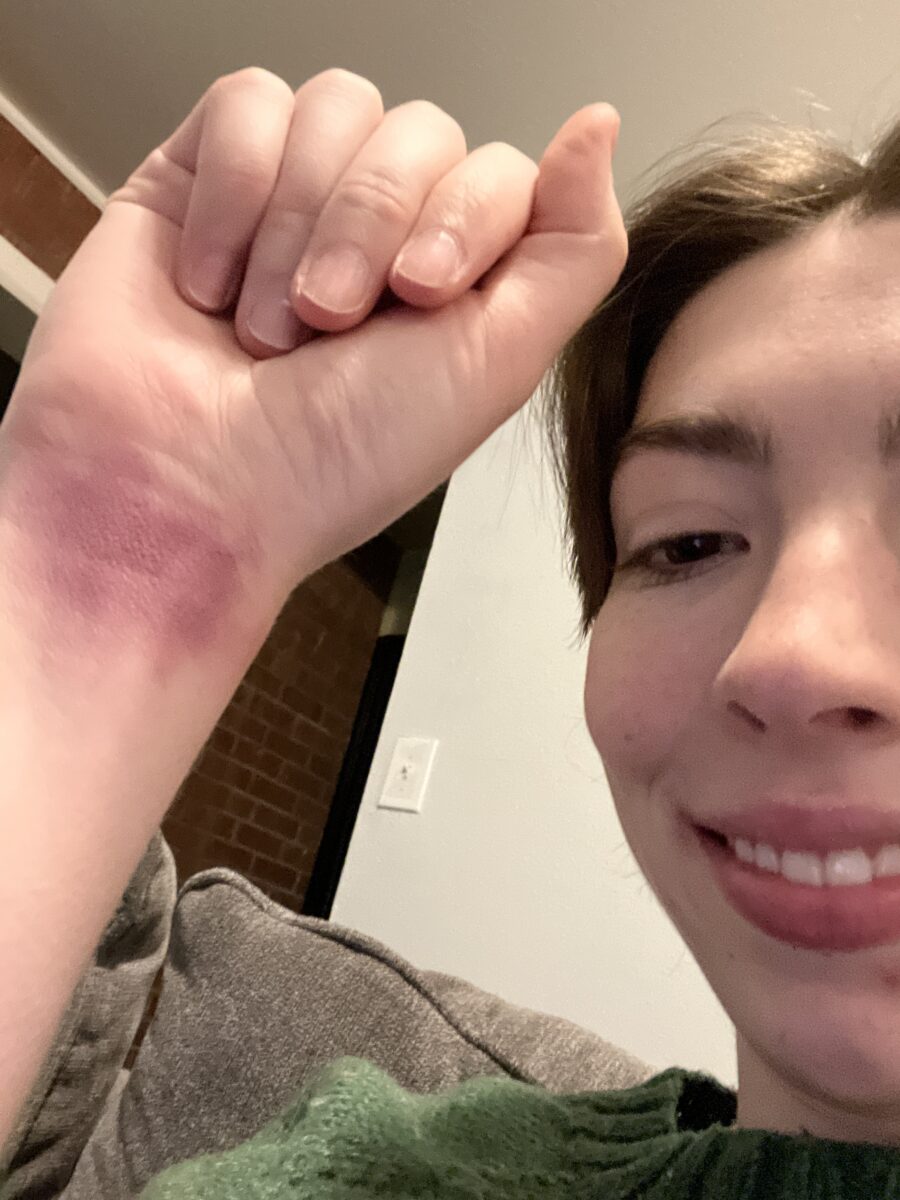I had the incredible opportunity to join an expedition to Panamá’s Pearl Islands earlier in my scholarship year. After a long travel day, which took over 24 hours, a plane, ferry, and skiff ride, I arrived on Isla del Rey. The following day, I woke up to an infection on my ankle, which I had injured a few weeks before while hiking. Luckily, one of our expedition leaders (the incredible Callie Broaddus) was a wilderness EMT and was able to help get the infection under control. Throughout the expedition, our group unfortunately experienced a few injuries, and Callie was equipped and ready to deal with them each time.
This experience inspired me to pursue more advanced first aid skills, so I took a Wilderness First Responder (WFR) course. This course consisted of 30+ hours of online learning and 5 days of in-person training. It covered everything from musculoskeletal injuries to environmental injuries (heat, cold, altitude, animal bites) to illness and disease. We learned about pretty much everything that could possibly go wrong in the wilderness and got trained in CPR and EpiPen administration.
My favorite part of the course was the in-person scenario training. Each day, students rotated being “patients” and “responders” and had to address a situation based on what we had learned. As the first responders, we were given little information and had to figure out the patient’s injury and how to treat it. The instructors also used makeup to put fake blood and bruises on the patients for us to uncover during the examination.

On one of the training days, we did a night rescue, where we had to treat one patient with a broken femur, one with a broken elbow, and one who had a seizure. This scenario was meant to mimic a situation where a team in the backcountry got injured in a landslide, the sun had set, and it was snowing. This kind of situation was a great learning experience because it meant dealing with the cold, snow, and wind while treating several injured team members. When you are in the wilderness, there can be many environmental factors to deal with, along with a potential injury, so going through this kind of practice where we were out in the elements was really valuable.
While it was very helpful to learn about the different problems and injuries and how to treat them, what I found especially helpful was the Patient Assessment System (PAS), or framework used when treating any patient. The PAS included a scene assessment, initial assessment, vitals, plan, history, and treatment. Each of these had a specific checklist to go through to make sure that every situation was assessed thoroughly. We also learned how to write and give a verbal SOAP note (the same format doctors use to document patient details) to communicate with others about the patient.
This course was interesting because while many of these skills apply to an urban context, we specifically learned the best practices in a wilderness setting. This means that you have delayed access to care and thus way more time with your patient than you would have if an injury happened in a city, for example. It was really helpful to learn about the different considerations you might have in these situations. I learned so much during the certification and now feel much more prepared to handle emergency situations, especially in more remote settings.
Thank you to the Our World-Underwater Scholarship Society and our sponsor Rolex for making this scholarship experience possible. I would also like to thank Reef Photo and Video, Nauticam and Light and Motion for my underwater camera setup as well as Aqualung, Fourth Element, Suunto, Halcyon, and DUI for my diving equipment.